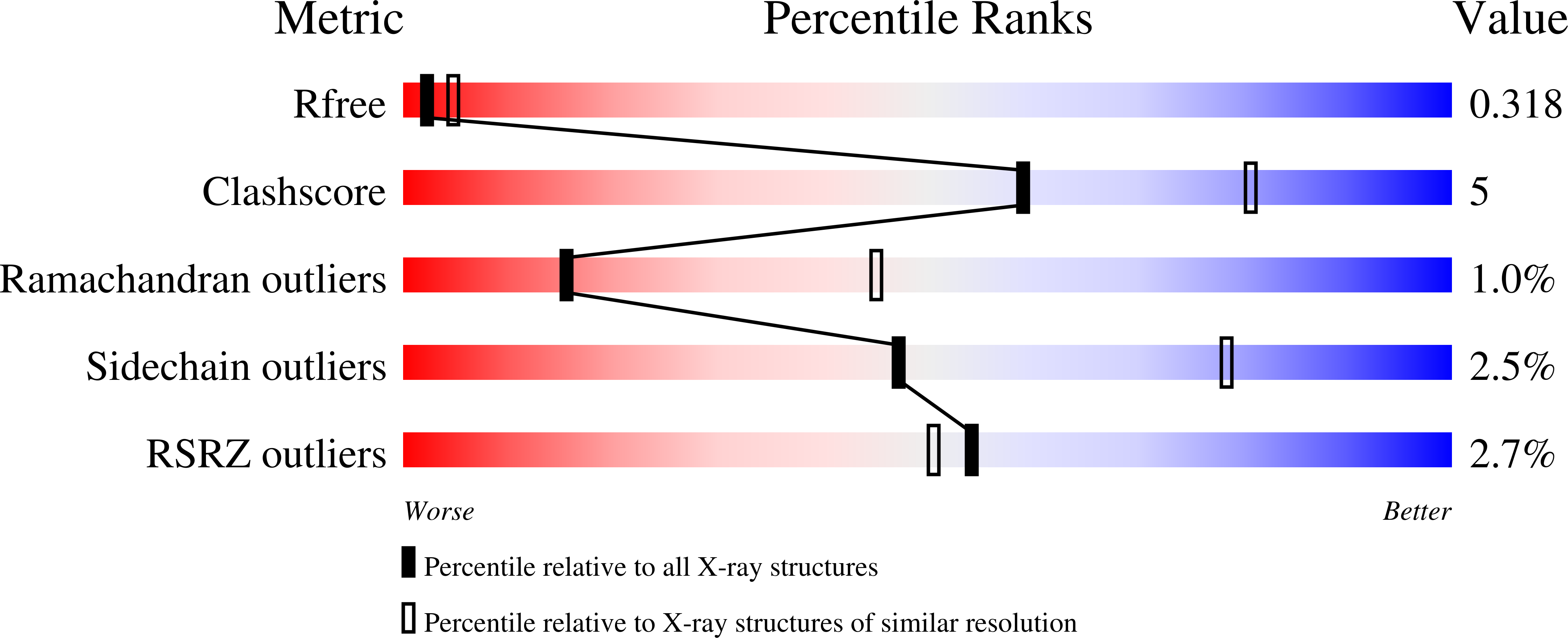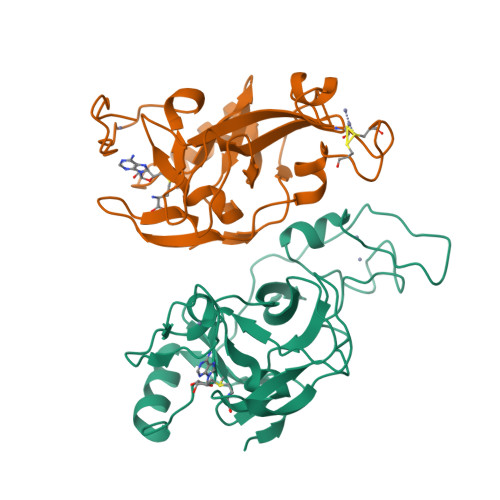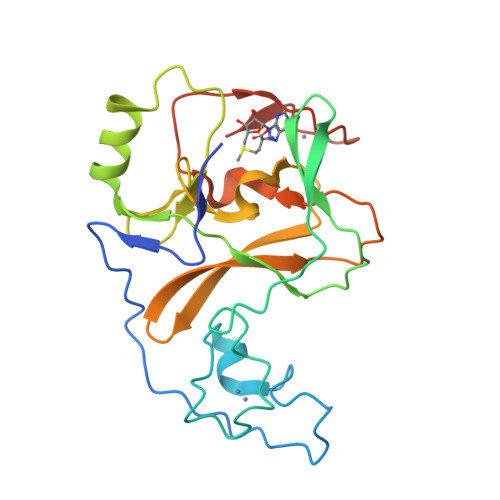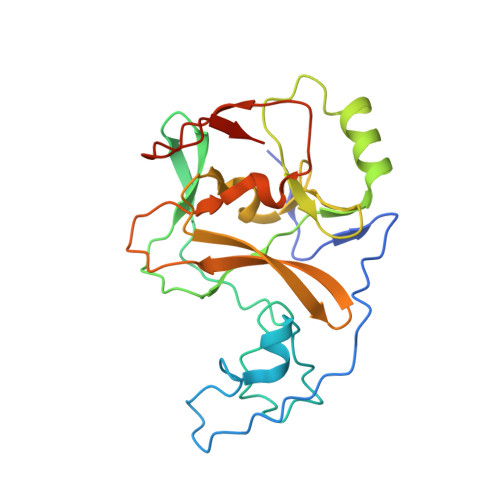Two Loops Undergoing Concerted Dynamics Regulate the Activity of the ASH1L Histone Methyltransferase.
Rogawski, D.S., Ndoj, J., Cho, H.J., Maillard, I., Grembecka, J., Cierpicki, T.(2015) Biochemistry 54: 5401-5413
- PubMed: 26292256
- DOI: https://doi.org/10.1021/acs.biochem.5b00697
- Primary Citation of Related Structures:
4YNM, 4YNP, 4YPA, 4YPE, 4YPU - PubMed Abstract:
ASH1L (absent, small, or homeotic-like 1) is a histone methyltransferase (HMTase) involved in gene activation that is overexpressed in multiple forms of cancer. Previous studies of ASH1L's catalytic SET domain identified an autoinhibitory loop that blocks access of histone substrate to the enzyme active site. Here, we used both nuclear magnetic resonance and X-ray crystallography to identify conformational dynamics in the ASH1L autoinhibitory loop. Using site-directed mutagenesis, we found that point mutations in the autoinhibitory loop that perturb the structure of the SET domain result in decreased enzyme activity, indicating that the autoinhibitory loop is not a simple gate to the active site but is rather a key feature critical to ASH1L function. We also identified a second loop in the SET-I subdomain of ASH1L that experiences conformational dynamics, and we trapped two different conformations of this loop using crystallographic studies. Mutation of the SET-I loop led to a large decrease in ASH1L enzymatic activity in addition to a significant conformational change in the SET-I loop, demonstrating the importance of the structure and dynamics of the SET-I loop to ASH1L function. Furthermore, we found that three C-terminal chromatin-interacting domains greatly enhance ASH1L enzymatic activity and that ASH1L requires native nucleosome substrate for robust activity. Our study illuminates the role of concerted conformational dynamics in ASH1L function and identifies structural features important for ASH1L enzymatic activity.
Organizational Affiliation:
Department of Pathology, ‡Center for Stem Cell Biology, Life Sciences Institute, §Division of Hematology-Oncology, Department of Internal Medicine, and ∥Department of Cell and Developmental Biology, University of Michigan , Ann Arbor, Michigan 48109, United States.





















